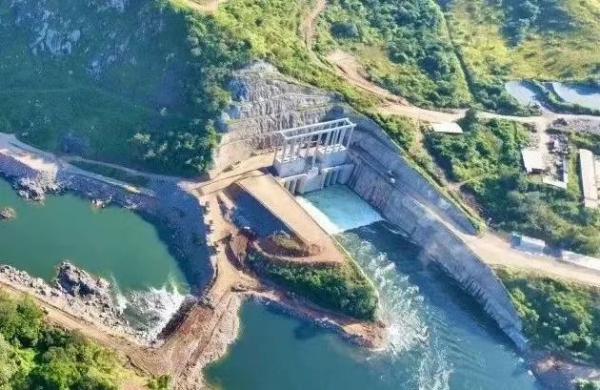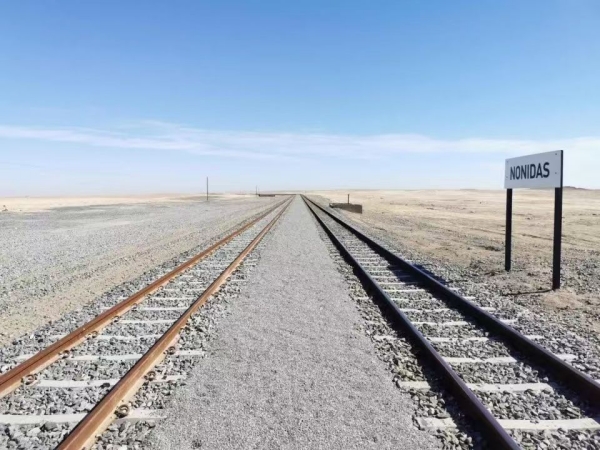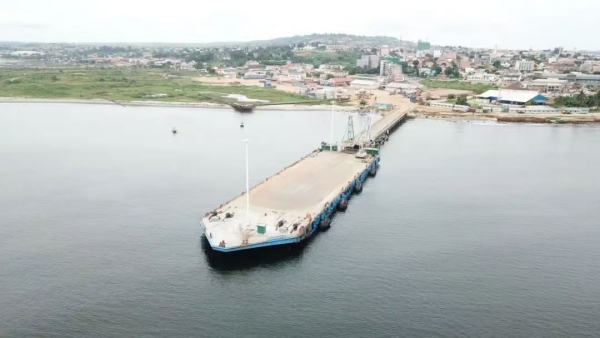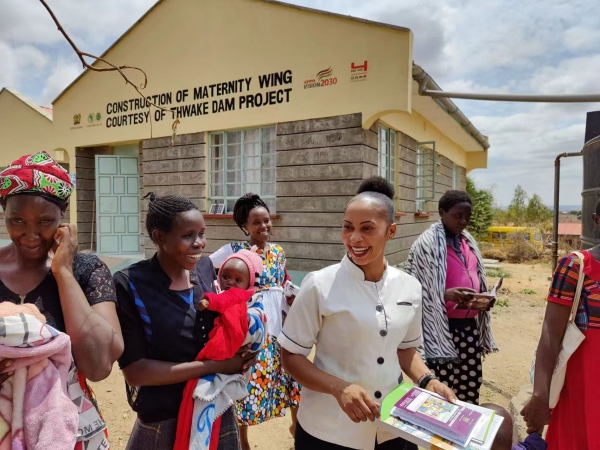As a leading enterprise in China’s “going global” strategy, China Energy Engineering Corporation Co., Ltd. (CEEC) has been deeply involved in Africa’s development since the 1970s.
In the new era, CEEC strives to be a provider of green solutions, a promoter of prosperity and a contributor to a brighter future in Africa, strengthening the long-standing friendship between China and Africa.
Becoming a provider of green solutions for Africa
Africa, one of the regions most affected by climate change, places green development at the heart of its sustainable future. Over the years, CEEC has partnered with African nations to deliver comprehensive, integrated and end-to-end solutions in clean energy and power development.

Caculo Cabaca Hydropower Station in Angola [Photo/sasac.gov.cn]
The Caculo Cabaca Hydropower Station, the largest hydropower project in Angola, is rapidly being constructed along the Cuanza River. Once operational, it will meet over 40 percent of Angola’s electricity needs.
In Africa, CEEC has successfully completed several significant hydropower projects, including Ethiopia’s Tekezé Hydropower Station, Angola’s Luassim Hydropower Station and Congo’s Liouesso Hydropower Station. Among them, the Tekezé Hydropower Station, with an installed capacity of 300,000 kilowatts and a total reservoir capacity of 9.4 billion cubic meters, received the prestigious China Construction Engineering Luban Prize.
In recent years, under the frameworks of the Belt and Road Initiative and the Forum on China-Africa Cooperation, China and Africa have worked together to launch over 300 new energy projects.

The Noor III Concentrated Solar Power Plant in Morocco [Photo/sasac.gov.cn]
The Noor III power plant in Morocco, the world’s largest concentrated solar power plant, provides clean energy to more than a million households and helps reduce reliance on imported electricity. In South Africa, the 283-MW Mooi Plaats Photovoltaic Project, once connected to the grid, supplies approximately 400 million kilowatt-hours of stable, clean electricity annually. In Niger, CEEC’s solar power storage project transformed the local power supply from 4-6 hours a day to 24-hour continuous service. CEEC is also advancing green hydrogen projects in Egypt, aiming for an annual production rate of about 140,000 tons to help secure North Africa’s energy future.

The Kairouan Photovoltaic Project in Tunisia [Photo/sasac.gov.cn]
In Northeast Africa, Egypt’s largest single-unit photovoltaic project – the 500-MW Kom Ombo Photovoltaic Plant – is progressing rapidly.
Elsewhere, significant projects including the Central African Republic’s first solar power station – the Sakai Photovoltaic Power Plant, West Africa’s largest biomass power plant – the 46-MW Biovea Biomass Power Plant in Côte d'Ivoire, and Tunisia’s largest single-unit photovoltaic project – the Kairouan Photovoltaic Plant, are also underway.
Together with numerous clean energy initiatives in Africa, these projects help promote sustainable development on the continent of Africa.
Promoting Africa’s Prosperity
Since 2013, China has helped build over 6,000 kilometers of railways and highways in Africa, creating vital arteries for development.
CEEC has established 54 branches across Africa, operating in 48 countries and signing contracts for 178 projects.

The Walvis Bay-Kranzberg railway project in Namibia [Photo/sasac.gov.cn]
The Walvis Bay-Kranzberg railway project in Namibia, known as the country’s “economic lifeline”, has significantly improved transportation conditions by increasing train speeds for passengers to 100 kilometers per hour and freight to 80 kilometers per hour after completion.

Cabinda Port in Angola [Photo/sasac.gov.cn]
In Angola, the launch of the Cabinda Port project has tripled cargo handling capacity, making the sea the primary transport method for Cabinda province.

Bamako Third Bridge in Mali [Photo/sasac.gov.cn]
The Bamako Third Bridge, known as the “China-Mali Friendship Bridge”, is the largest non-reimbursable assistance project undertaken by CEEC in West Africa. Completed in September 2011, the bridge has greatly eased local travel congestion and become a landmark in Bamako.

EETC 500 kV Transmission Line Project in Egypt [Photo/sasac.gov.cn]
In Nigeria, CEEC has participated in various projects, including the MJ and ALG 330 kV double-circuit transmission line EPC projects, as well as the MP, Makurdi, Jos, Kukwaba substations, and Benin 330 kV line construction. In Egypt, CEEC designed the EETC 500 kV transmission line project, the first project under China-Egypt capacity cooperation and Egypt’s largest transmission line project.

The Egyptian government’s Data and Cloud Computing Center [Photo/sasac.gov.cn]
CEEC also participated in the construction of the Egyptian government’s Data and Cloud Computing Center, the first artificial intelligence center in Egypt and North Africa for analyzing and processing big data.
These numerous collaborative achievements are taking root and becoming symbols of China-Africa cooperation, enhancing the well-being of the African people.
Building a Better Future for Africa
CEEC has long been committed to advancing the construction of a series of projects that benefit people’s livelihoods in Africa.

Kpong Water Supply Expansion Project in Ghana [Photo/sasac.gov.cn]
In Equatorial Guinea, the Malabo Urban Sewage Treatment Project improves water safety for 200,000 people. In Ghana, the Kpong Water Supply Expansion Project provides safe water to nearly 3 million people in Accra and surrounding areas. In Ethiopia, the Kaliti Sewage Treatment Plant serves 600,000 people by treating 100,000 tons of wastewater daily.

Maternity Ward built by the Thwake Dam Project team in Kenya [Photo/sasac.gov.cn]
In Kenya, the Thwake Dam Project team, in collaboration with the African Development Bank Group and the Kenyan government, constructed a maternity ward to improve healthcare conditions.
Looking ahead, CEEC will continue to leverage its strengths in the joint pursuit of modernization with Africa, contributing to the building of a high-level China-Africa community with a shared future.
(Executive editor: Zhu Zeya)